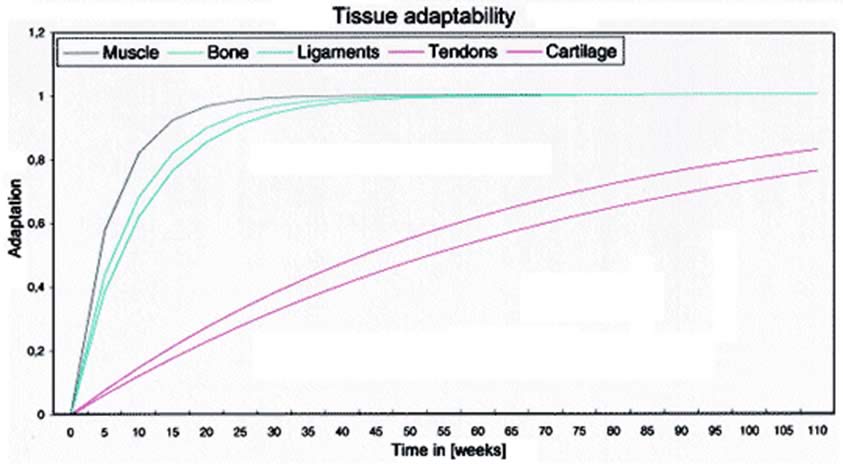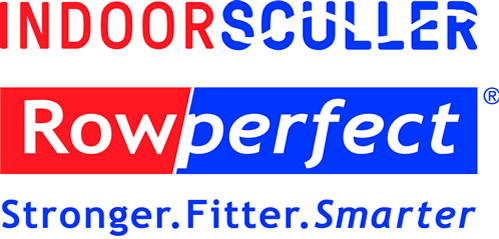
Reduces Injury
The graph above shows tissue adaption times for various tissues. For instance, you can see that full adaptation for muscle tissue can be achieved in 35 weeks, whereas for cartilage and tendons 75% adaptation takes two years. The graph was given to me when I was a young veterinary student as an explanation of why young horses break down when trained too hard, or why any horse will break down if over-trained, especially on harder surfaces. I always found it fascinating that bones and muscles adapted so quickly compared to tendons and cartilage – but when you understand that bones are constantly cycling the calcium they contain, and then remember that they need to heal quickly if they break, it makes good sense.
Rowing on a fixed ergometer is analogous to running – or even bounding – barefoot on concrete; it is repetitively compressing cartilage in your joints (including of course the spinal disks) as well as jerking tendons due to the stop-start nature of the action; the delayed pickup at the catch and the shearing/compressing stop at the finish. The above is particularly interesting when you consider:
- Cartilage is essentially structured like a sponge – large sugar/protein molecules holding lots of small water molecules by weak electric bonds. Squeeze that cartilage repetitively and the water is squeezed out, the cartilage loses its elasticity and pretty soon it fails – first micro-cracks then proper cracks. Sounds painful? It sure is!
- The spinal disks are formed by two types of fibro-cartilage (think joint cartilage but with fibrous tissue mixed in): the ANNULUS or ring round the outside of the disk, and the PULPOSUS or pulp – the soft goo inside the ring. Both are cartilage, and both shown clearly in scans as well as in theory to dehydrate significantly (10%!!) after rowing for thirty minutes on a stationary ergometer
So now you know why for many, if not most athletes the weakest link is cartilage, because it adapts so slowly to higher load and is more prone to damage by the strain of repetitive high loads.
Rowing clearly uses the back muscles and the core/abdominal muscles a great deal and will always do so – it’s one of the reasons it’s such a great exercise! But doing it in a fixed environment, without the requirement for balance to enforce good posture and symmetrical loading, makes it far more likely to cause injury.
As a general rule the following statement is good advice: To prevent injuries the maximum allowable load to the weakest link should not be repetitively exceeded and peak loads should be avoided. For those comparing some of the attempts to copy our dynamic action Indoor Sculler: the heavier the moving mainframe of the rowing machine the greater the forces (and the less it simulates the wonderful rhythm of rowing in a racing boat).
The Indoor Sculler’s mainframe weighs just 17kg.
So yes, it’s a little more expensive – but you’re getting something truly revolutionary and designed to last for many years. Choose wisely !
